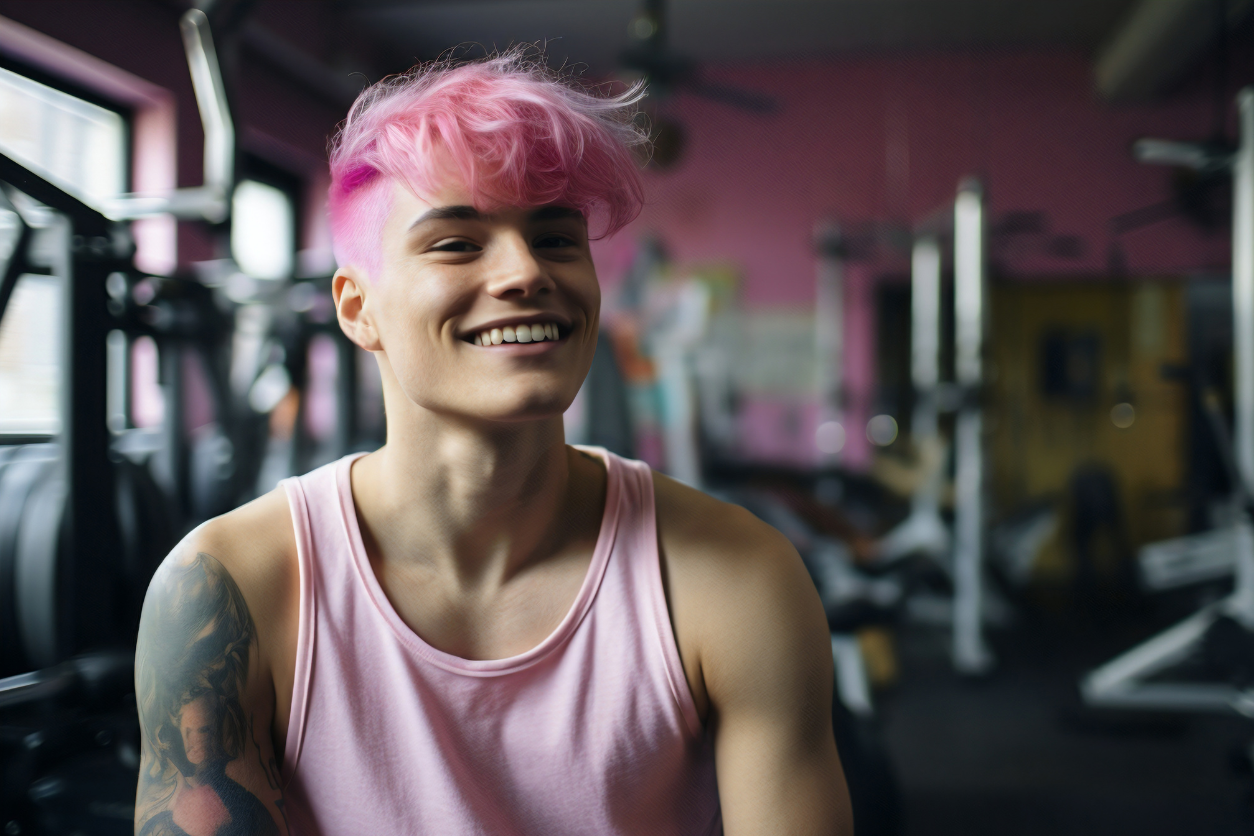Transgender man Leo Telford shares his experience of fitness training as a trans person and explains how PTs can help them feel comfortable in the gym.
Many people are unaware that the transgender community in the UK makes up less than 1% of the population. In fact, in the 2021 UK census, just 0.5% of people said their gender identity and sex registered at birth were different. Often, innocent ignorance of trans issues means people form their opinions and ideas of what a trans person is based on what’s said in the media. You may not know a trans person in real life to ask, or have had the opportunity to find out more from LGBT informed sources. Here, Leo Telford shares his experiences of fitness training.
For me, my main goal was to build muscle and, therefore, develop a more masculine shape and structure. I wanted wider shoulders, to make my hips appear narrower and for my arms to fill a t-shirt in a way that would affirm me and my masculine presentation. Something that’s crucial, therefore, for PTs to understand is the goals of their client. This is of course a general rule of thumb, but what a trans person desires will vary depending on their age, how they present, the parts of their body they wish to alter/enhance and, of course, the person themselves. Some people may want to change their body in the gym but find the idea of entering one very daunting and overwhelming; therefore, if they reach out for help, ensure you are approachable, kind and reassuring
Trans people who are into fitness and working out can often find certain aspects of going to the gym uncomfortable, whether that’s finding clothes in which they like how they look, understanding how to train for the results they want, or even figuring out how to draw the least amount of attention to themselves. Trans clients, it could be said, may require specific or more specialised support from their personal trainers, as they have different needs to some cisgender individuals.
An initial way to make a client comfortable and to create a respectful environment is to ask what pronouns they use. It’s important to realise that, even if you think you might know, there is no harm in double checking. Furthermore, it shows you are LGBT friendly, which is something a trans client is likely to appreciate. Not only does it mean you won’t be misgendering someone, but they will understand that you care and want to address them appropriately.
“Despite the fact trans people may have different needs, above all, we want to feel respected, affirmed and supported, just as any client does.”
The idea of ‘coming out’ to people in general can be very anxiety inducing in all scenarios and spaces, but the idea of doing this to a PT may carry different implications. Your client may feel it’s necessary that you know this about them, as you will develop an important relationship over the course of your training together, but also because their goals may make sense more in the context of their transness and, therefore, they feel it’s important to inform you.
Furthermore, the gym for many can be a scary place, especially for newcomers, and can feel like a restrictive and, on occasion, masculine environment. These factors may contribute to apprehension and worry over coming out to a (potential) PT. If the client does decide to share this aspect of their identity with you, keep in mind it would have taken courage and careful consideration, therefore make sure you are respectful and endearing in your response. This will help to create a safe space for them from the start and perhaps encourage them to give more to the relationship and put them in a better place to commit.
It’s important to note that your client may not know exactly what they want, just that they wish for X or Y to look different and feel better about the body they see in the mirror. Listening to the concerns and desires of your client and paying attention to their needs can help them feel reassured in their decision to start a working relationship but also assist you in how best to help the individual.
Despite the fact trans people may have different needs, above all, we want to feel respected, affirmed and supported, just as any client does.

Leo Telford
Leo Telford is a 21 year old Sociology student and co-author of ‘Between’ a memoir on my gender transition, written with his mother. The book covers the experiences of he and his family following his coming out at age 11 as transgender. He in interested in politics, advocacy for the trans community and weight lifting.
Like to know more about tailoring your PT business for your clients? Read How to engage with Generation Z on the FitPro blog.







